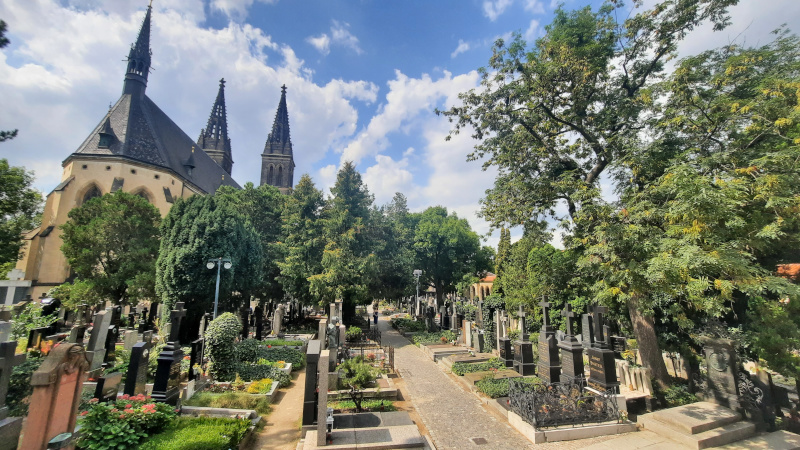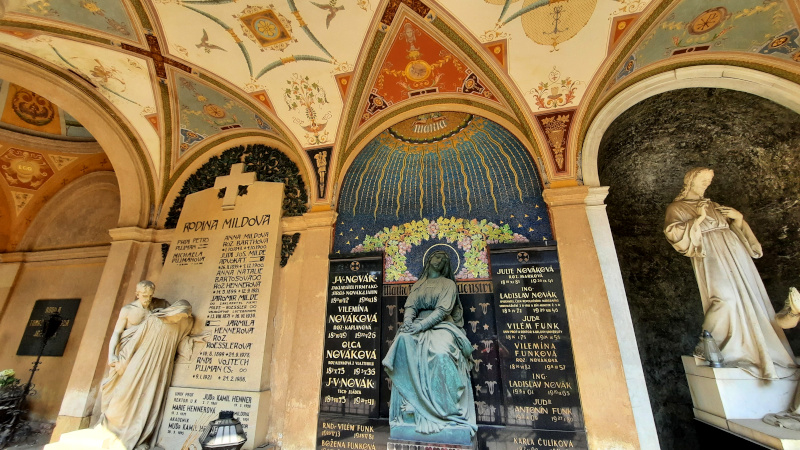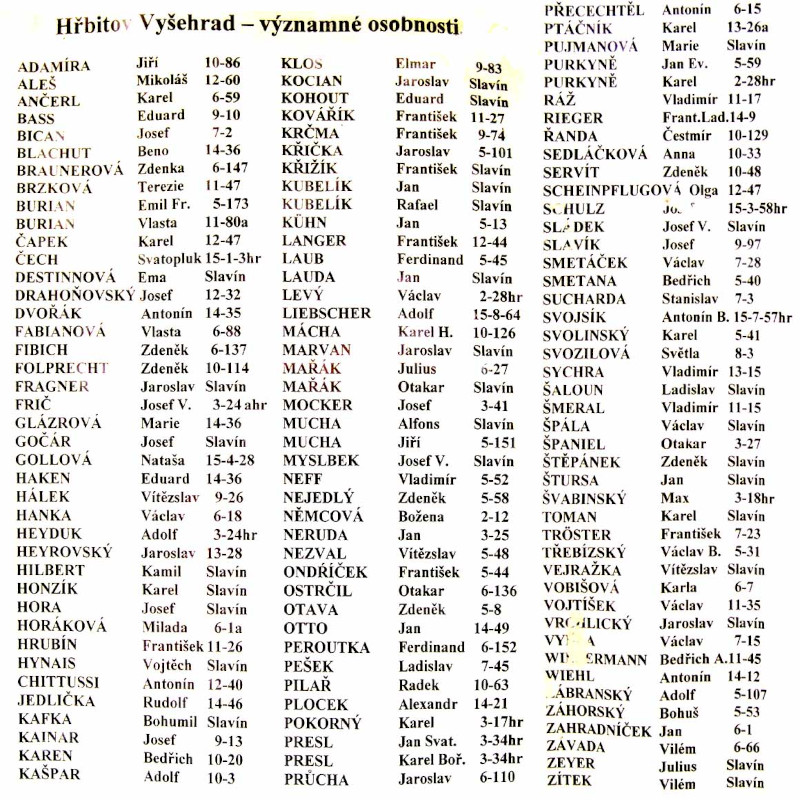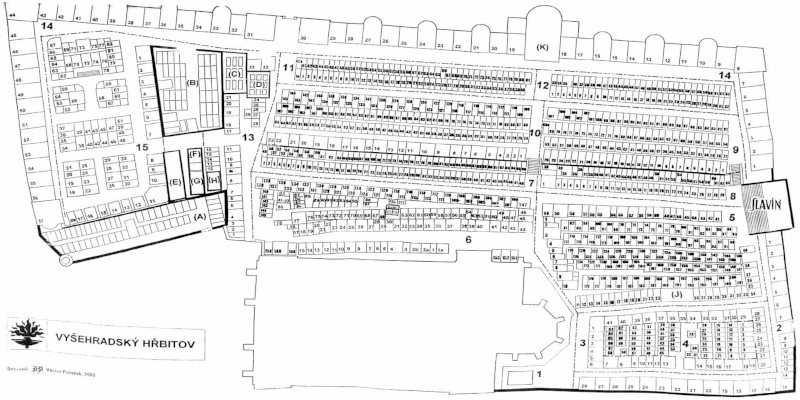Exploring Prague’s Vyšehrad Cemetery
It’s not normally on many people’s top ten list of things to do in Prague unless 1) you like cemeteries, 2) you like art/design and 3) you know something of Czech culture. But for some people a trip to the Vyšehrad Cemetery will be an interesting and rewarding experience. I’ll show you 3 ways to get here but unlike most other sites I also show you how to understand the cemetery layout and where to find the famous people.

Some of the History
Vyšehrad Cemetery is actually fairly new when compared to other cemeteries in the city. There is a record of a cemetery being here since the 13th Century and there is mention that even as late as 1785 you needed special permission to be buried here. However, what you see now is largely a plan from the 1860s to create a National Burial Ground which is implemented between 1887 and 1901 and includes the reconstruction of Vyšehrad Cemetery in it’s present area of 0.81 Hectares plus the construction of the neo-Gothic Church of ST Peter and St Paul.
Who is Interred in the Vyšehrad Cemetery?

This is where the “interest” pops up. You see Vyšehrad Cemetery has the highest concentration of architects, artists, actors, writers, poets, sculptors, painters, singers, musicians, composers, conductors and performers than anywhere else in the country. Secondly, there is a vast array of very artistic gravestones and tombs to see plus the Colonnade that runs along two (and a bit) sides contains both classical and Art Nouveau decoration. So if “arts and culture” is your thing and you want to be in the presence of greatness then it’s worth a visit. There’s also a smattering of scientists, athletes (including a Ballon d’Or winner) and politicians (including a former Premier).
How to Navigate the Vyšehrad Cemetery
I’ve put two photos below, click on them for the large version. When you get to the main entry of the cemetery adjacent to the church entry you’ll find brass plaques on the railings which show the layout of the cemetery and some detail of the people buried. These plaques are great if you read Czech because they tell you the profession of the person and their location but hey, the plaques don’t show how the cemetery is divided. So I prefer the pictures below:
The picture above shows the 123 most significant characters in Czech/Slavic culture interred within the cemetery. You can search through in alphabetical order and see their location. Now you just have to understand the numbering. Most will have a simple 2/5 or 5/58 which is the block number and grave number within that block. There are some special references. Anything marked “14” is in the covered arcade area and anything marked “15” is the area to the left of the main entry. The “15” area has different numbering like 15-8/72 which means block 15, sub-block 8, grave number 72. People directly related to the Church are interred in blocks marked A to K. So now you need to know the layout of the cemetery.
The picture above is a layout of the Vyšehrad Cemetery so now you can see where the various “Blocks 1-15 and A-K” and “Slavín” are located in the cemetery. Click on the picture for the larger version.
What is Slavín?

You’ll have noticed that some of the people in the list above just have the word “Slavín” next to them. Many of the most important Czech personalities do not have their own graves and are interred into the crypt known as Slavín. Each area of the crypt can take one coffin or eight urns (if cremated). On the sarcophagus above the crypt entry is a phrase that translates as “though they be dead they continue to speak”. A poet named Julius Zeyer became the first person to be interred at Slavín in 1901. The last person to be interred at Slavín was in 2013 bringing the total number of people here to 56. If you want to know who is interred at Slavín, birth/death dates and professions I’ve made a Slavín PDF List in English.
How to Get to Vyšehrad Cemetery
There are three ways depending on either cost or your fitness level. The easiest way is just to get a taxi to the main cemetery entry which will take about 15 minutes from the centre, costs @czk150 and requires the least level of fitness. The second way is the metro where you get off at the Vyšehrad metro station on the RED “C” line and make your way first through the old gates and you arrive at the rear entry of the cemetery so this requires a 20 minute walk over reasonably flat ground. If you want to enter at the main cemetery entrance here the Google Maps Location. Third is a riverside tram of which there are several choices i.e. 2, 3, 5, 7, 13, 16, 17 where you will get off at the stop called Výton. Then you want to keep walking upriver under the bridge. The point you are aiming for is Na Libusince 96/7 Google Maps Location. In the corner opposite the building is a set of steps that takes you up to the main cemetery entry. This requires you to be confident in your fitness level.
Opening Hours
November through to February – 8am to 5pm
March, April and October – 8am to 6pm
May through to September – 8am to 7pm


